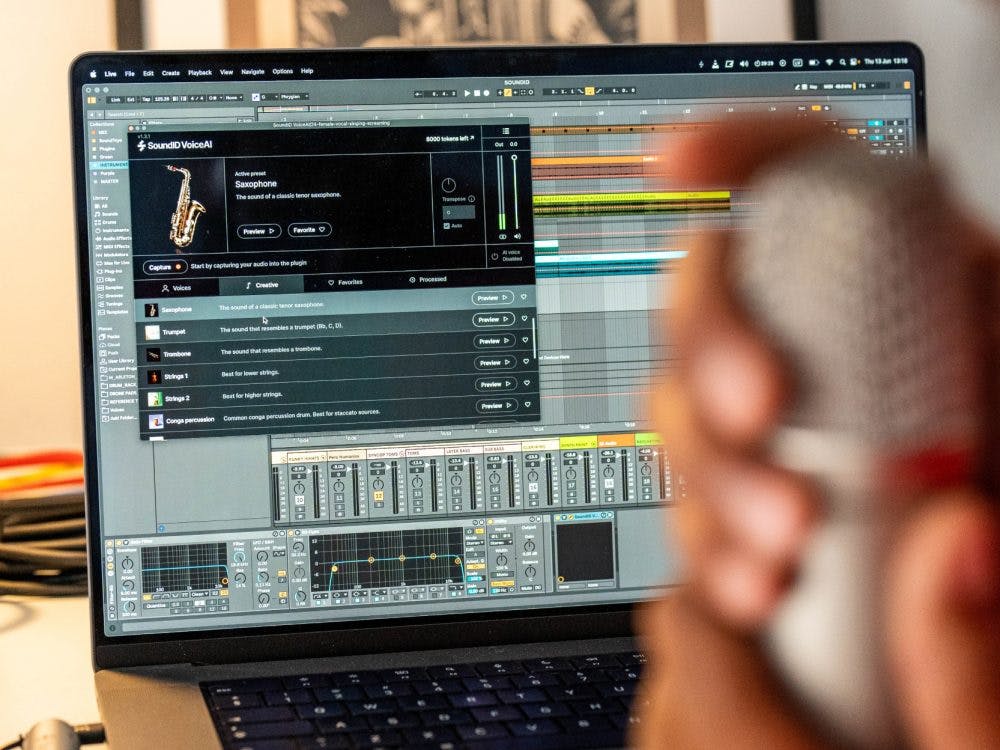Voice-based AI tools and sample libraries represent two distinct approaches to instrument creation in modern music production. AI music production tools allow producers to transform vocal input directly into instrumental sounds through machine learning algorithms, whilst traditional sample libraries provide pre-recorded audio segments that can be manipulated and arranged. The key difference lies in the creative process: AI tools offer spontaneous, voice-driven generation, whereas sample libraries require browsing, selecting, and layering existing recordings to build instruments.
Understanding the shift in music creation technology
Music production has evolved dramatically from the days of purely hardware-based recording to today’s software-driven workflows. Traditional sample libraries dominated the landscape for decades, offering producers vast collections of pre-recorded sounds to craft their compositions.
Now, voice-to-instrument software represents a fundamental shift in how we approach sound creation. Instead of searching through thousands of samples, producers can simply hum a melody or sing a line and instantly transform it into orchestral strings, brass sections, or any number of instrumental sounds.
This evolution matters because it removes barriers between musical ideas and their realisation. You no longer need extensive musical training or deep technical knowledge to create complex instrumental arrangements. The technology democratises music creation whilst offering professional producers new avenues for rapid prototyping and creative exploration.
What exactly are voice-based AI tools for instrument creation?
Voice-based AI tools use machine learning algorithms to analyse vocal input and transform it into instrumental sounds. These systems process the pitch, timing, and tonal characteristics of your voice, then apply sophisticated synthesis techniques to generate instrument-like output.
The technology works by training neural networks on vast datasets of both vocal and instrumental recordings. When you hum a melody, the AI identifies the fundamental frequencies and harmonic content, then maps these characteristics onto the target instrument’s sonic profile.
Modern voice-to-instrument software can handle various input types, from simple humming to complex vocal arrangements. The AI maintains the original performance’s timing and expression whilst completely transforming the timbre and character of the sound. Some tools even allow you to create backing vocals, transform voices into drums through beatboxing, or generate rich orchestral arrangements from simple vocal sketches.
How do traditional sample libraries work for making instruments?
Sample libraries contain thousands of pre-recorded audio segments, typically organised by instrument type, playing technique, and musical key. Producers browse these collections to find sounds that match their creative vision, then layer and manipulate them to build complete instrumental parts.
The process involves selecting appropriate samples, arranging them across a keyboard or sequencer, and often combining multiple samples to create realistic instrumental performances. Advanced sample libraries include multiple velocity layers, round-robin variations, and articulation switching to provide more natural-sounding results.
Many libraries also feature scripted instruments that automatically handle realistic performance behaviours, such as legato transitions between notes or authentic playing techniques specific to each instrument. This approach gives producers access to high-quality recordings of real instruments, played by skilled musicians in professional studios.
What are the main differences in workflow between AI voice tools and sample libraries?
The workflow differences between these approaches are substantial. With AI voice tools, you start by recording or humming your musical idea directly, then select a preset to transform it. The entire process can take minutes, and you’re working with your own musical performance from the beginning.
Sample library workflows require more preparation and technical knowledge. You’ll spend time browsing sounds, loading instruments, programming MIDI sequences, and often layering multiple samples to achieve the desired result. This process offers more granular control but demands greater time investment.
| Aspect | AI Voice Tools | Sample Libraries |
|---|---|---|
| Initial Setup | Record vocal input directly | Browse and load sample instruments |
| Time to Results | Minutes | Hours to days |
| Technical Skills | Basic recording knowledge | MIDI programming and mixing |
| Creative Input | Direct musical performance | Sound selection and arrangement |
Which approach gives you better creative control and flexibility?
Creative control varies significantly between these methods. Sample libraries offer extensive manipulation possibilities—you can adjust individual samples, layer multiple instruments, and craft highly detailed arrangements with precise control over every element.
AI voice tools provide different types of creative freedom. You can instantly experiment with musical ideas, transform your voice into any instrument, and explore arrangements that would be impossible or time-consuming with traditional methods. However, you’re working within the parameters of available AI presets and models.
The flexibility question depends on your creative goals. If you need precise control over every sonic detail and have specific arrangement requirements, sample libraries excel. If you want rapid experimentation, intuitive music creation, and the ability to capture spontaneous musical ideas, AI voice tools offer superior flexibility.
Many producers find that combining both approaches yields the best results—using AI tools for initial ideation and sample libraries for detailed refinement and production.
Making the right choice for your music production needs
Your choice between AI voice tools and sample libraries should align with your specific production requirements and creative workflow. Consider AI voice tools when you need rapid prototyping, want to capture musical ideas quickly, or prefer intuitive, performance-based creation methods.
Choose sample libraries when you require detailed control over arrangements, need specific instrumental articulations, or are working on productions where sonic precision is paramount. Budget considerations also matter—AI tools often require subscription models or token-based pricing, whilst sample libraries typically involve one-time purchases.
The most effective approach often involves using both methods strategically. Start with AI voice tools to rapidly develop musical ideas and arrangements, then enhance and refine your productions using high-quality sample libraries for final polish and professional results.
At Sonarworks, we understand that modern music creation benefits from innovative approaches to sound generation and processing, which is why tools like SoundID VoiceAI complement traditional production workflows by offering new possibilities for creative expression.
If you’re ready to get started, check out VoiceAI today.



